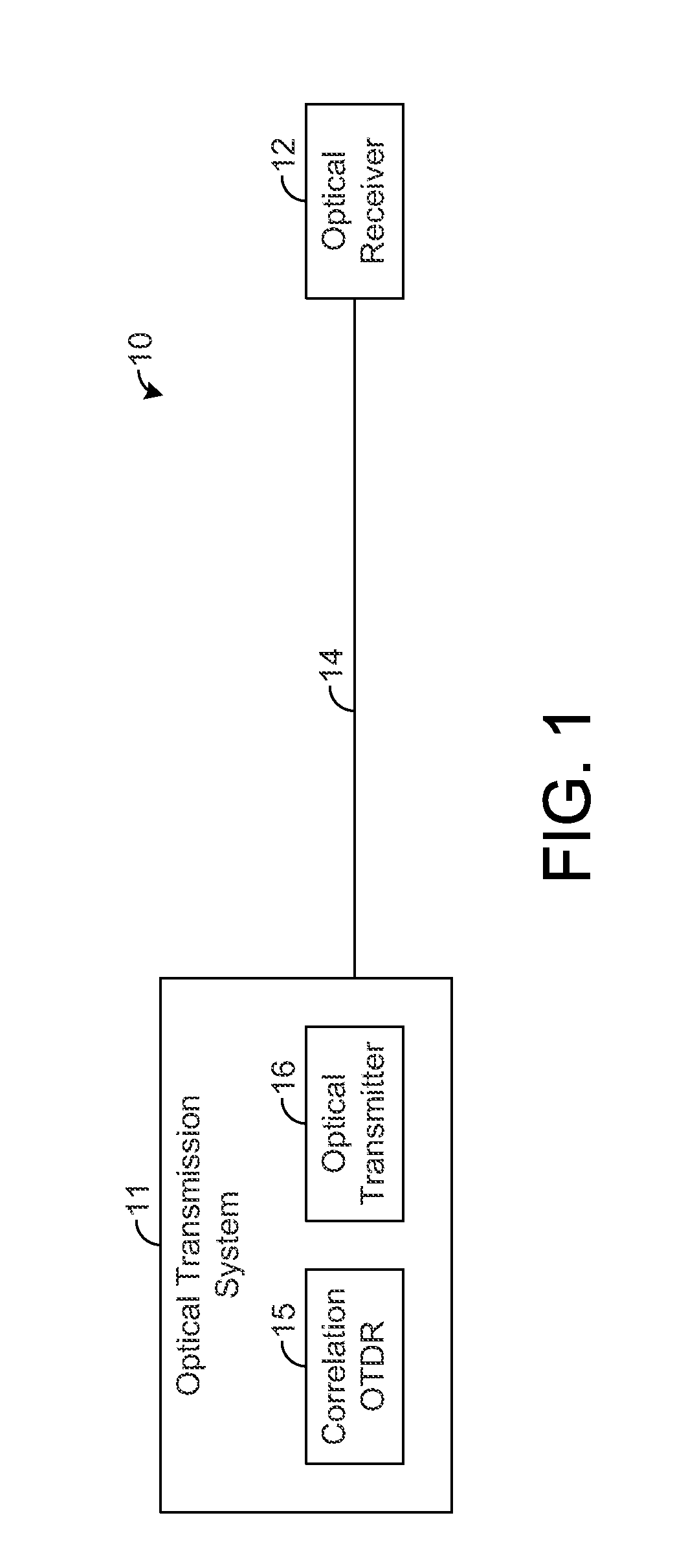Optical time domain reflectometer systems and methods using wideband optical signals for suppressing beat noise
a reflectometer and optical signal technology, applied in the field of fiberoptic communication systems, can solve the problems of attenuation of signals, significant drawbacks of the foregoing otdr, and adversely affecting the performance of optical communication
- Summary
- Abstract
- Description
- Claims
- Application Information
AI Technical Summary
Benefits of technology
Problems solved by technology
Method used
Image
Examples
Embodiment Construction
[0017]The present disclosure generally pertains to systems and methods for reducing beat noise in correlation optical time domain reflectometers (“correlation OTDRs”). As described above, a correlation OTDR provides a correlation sequence (e.g., PN sequence) that is continuously transmitted along an optical fiber during testing. Such continuous transmission can result in beat noise that degrades the quality of the measured returns. In this regard, each sample is composed of backscatter returns from many points along the fiber that arrive at the OTDR at the same time. When a subset of these returns have frequency differences that appear the passband of the OTDR receiver, the constructive and destructive interference of these returns at the OTDR receiver can cause significant low-frequency beat noise in the OTDR signal. Increasing the spectral width of the transmitted signal reduces the impact of beat-notes in the OTDR receiver by spreading the power of the beat-notes outside of the r...
PUM
 Login to View More
Login to View More Abstract
Description
Claims
Application Information
 Login to View More
Login to View More - R&D
- Intellectual Property
- Life Sciences
- Materials
- Tech Scout
- Unparalleled Data Quality
- Higher Quality Content
- 60% Fewer Hallucinations
Browse by: Latest US Patents, China's latest patents, Technical Efficacy Thesaurus, Application Domain, Technology Topic, Popular Technical Reports.
© 2025 PatSnap. All rights reserved.Legal|Privacy policy|Modern Slavery Act Transparency Statement|Sitemap|About US| Contact US: help@patsnap.com



